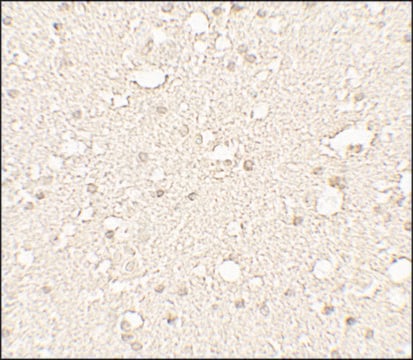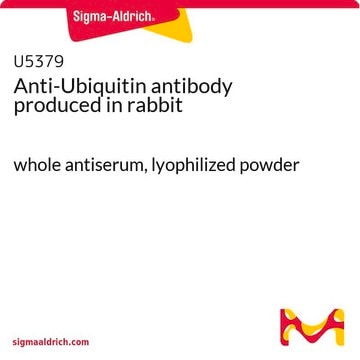T9028
Monoclonal Anti-Tubulin, Tyrosine antibody produced in mouse
clone TUB-1A2, ascites fluid
Sinônimo(s):
Anti-CDCBM6, Anti-CSCSC1, Anti-M40, Anti-OK/SW-cl.56, Anti-TUBB1, Anti-TUBB5
Selecione um tamanho
R$ 4.018,00
Selecione um tamanho
About This Item
R$ 4.018,00
Produtos recomendados
fonte biológica
mouse
Nível de qualidade
conjugado
unconjugated
forma do anticorpo
ascites fluid
tipo de produto de anticorpo
primary antibodies
clone
TUB-1A2, monoclonal
contém
15 mM sodium azide
reatividade de espécies
human, plant, animal
técnica(s)
indirect immunofluorescence: 1:800 using cultured chicken fibroblasts
microarray: suitable
western blot: suitable
Isotipo
IgG3
nº de adesão UniProt
Condições de expedição
dry ice
temperatura de armazenamento
−20°C
modificação pós-traducional do alvo
unmodified
Informações sobre genes
human ... TUBA4A(7277) , TUBB(203068)
Descrição geral
Especificidade
Imunogênio
Aplicação
- indirect immunofluorescent labelling
- immunoblotting technique
- immunocytochemical staining
Ações bioquímicas/fisiológicas
Exoneração de responsabilidade
Não está encontrando o produto certo?
Experimente o nosso Ferramenta de seleção de produtos.
recomendado
Código de classe de armazenamento
12 - Non Combustible Liquids
Classe de risco de água (WGK)
WGK 1
Escolha uma das versões mais recentes:
Certificados de análise (COA)
Não está vendo a versão correta?
Se precisar de uma versão específica, você pode procurar um certificado específico pelo número do lote ou da remessa.
Já possui este produto?
Encontre a documentação dos produtos que você adquiriu recentemente na biblioteca de documentos.
Os clientes também visualizaram
Artigos
Microtubules of the eukaryotic cytoskeleton are composed of a heterodimer of α- and β-tubulin. In addition to α-and β-tubulin, several other tubulins have been identified, bringing the number of distinct tubulin classes to seven.
Active Filters
Nossa equipe de cientistas tem experiência em todas as áreas de pesquisa, incluindo Life Sciences, ciência de materiais, síntese química, cromatografia, química analítica e muitas outras.
Entre em contato com a assistência técnica
















